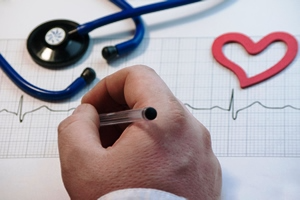In the realm of healthcare, prevention has always been touted as the cornerstone of well-being. Yet, prevention isn’t merely about healthy habits and lifestyle choices—it’s also about early detection and proactive management of potential health issues. This is where diagnostic testing steps in, playing a pivotal role in preventive healthcare by enabling early detection, monitoring, and informed decision-making.
Understanding Diagnostic Testing
Diagnostic testing encompasses a diverse array of procedures designed to evaluate various aspects of an individual’s health. From routine blood tests to advanced imaging techniques, these tests provide valuable insights into the body’s functioning, helping healthcare professionals identify potential health risks and formulate appropriate interventions.
Full Lab Services: The Foundation of Diagnosis
At the heart of diagnostic testing lies the comprehensive analysis offered by full lab services. Blood tests, serum markers, and biomarker assays are just a few components of these services. They provide crucial information about the body’s internal environment, including indicators of organ function, cholesterol levels, blood glucose levels, and much more. By scrutinizing these metrics, healthcare providers can detect abnormalities early on, even before symptoms manifest.
Urinalysis Testing: A Window into Health
Urinalysis testing offers a non-invasive yet revealing glimpse into a person’s health. By examining the composition of urine, healthcare professionals can detect signs of urinary tract infections, kidney dysfunction, diabetes, and other systemic disorders. Abnormalities in urine color, pH, protein levels, and the presence of blood or bacteria can all indicate underlying health issues, prompting further investigation and intervention.
12-Lead Electrocardiogram: Monitoring the Heart’s Rhythm
The 12-lead electrocardiogram (ECG) is a cornerstone of cardiovascular diagnostics. By recording the heart’s electrical activity, it provides valuable insights into cardiac rhythm, conduction abnormalities, and signs of ischemia or infarction. Early detection of such abnormalities through routine ECG screening can facilitate prompt intervention, potentially averting serious cardiac events and improving outcomes.
Pulse Oximetry: Assessing Oxygen Saturation
Pulse oximetry, a simple yet invaluable diagnostic tool, measures the oxygen saturation level in the blood. By placing a sensor on the fingertip or earlobe, healthcare providers can quickly assess oxygenation status, aiding in the management of respiratory conditions such as chronic obstructive pulmonary disease (COPD), asthma, and sleep apnea. Monitoring oxygen saturation levels can also be crucial in critical care settings, guiding interventions to optimize respiratory function.
The Impact on Preventive Healthcare
The significance of diagnostic testing in preventive healthcare cannot be overstated. By facilitating early detection and intervention, these tests empower individuals to take proactive steps towards safeguarding their health. Whether it’s identifying risk factors for chronic conditions, monitoring disease progression, or guiding treatment decisions, diagnostic testing serves as a cornerstone of preventive care, paving the way for healthier and more resilient communities.
Conclusion: Empowering Health Through Knowledge
In the realm of preventive healthcare, knowledge truly is power. Diagnostic testing provides the essential knowledge needed to detect, monitor, and manage health conditions effectively. From routine screenings to targeted assessments, these tests serve as invaluable tools in the arsenal of healthcare professionals, enabling them to intervene early and optimize outcomes. By embracing the importance of diagnostic testing, individuals can take proactive steps towards a healthier future, unlocking the potential for a life lived to the fullest.


